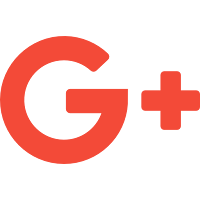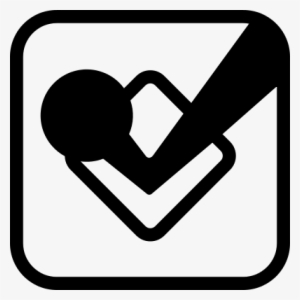Random thoughts; usually on the
6 train. Oct 24, 2017 · 9 min read
How On Earth Did
Email Newsletters
Become
Popular Again?
The best in news isn’t always
found online. A growing trend
shows that it’s inside your inbox
espite the criticisms you
may hear about today’s
methods of news
consumption, what most
people don’t realize is that there’s a
renaissance happening in news media.
It’s not happening on any new blogs,
and it’s not taking place on social
media platforms.
The truth is that one of the best things
to happen to the news is that it’s
being delivered to millions of people’s
inboxes every morning. Yes, I’m
referring to email newsletters and no,
I’m not talking about those awful &
clunky marketing ads disguised as
“news” that stuffed your junk email
inbox five times a week last decade.
On the contrary, today’s best
newsletters have rabid followings and
actually deliver useful information
that people look forward to each day.
I know this may sound like hyperbole
but there are actual statistics to back
this up and much of it is centered on
the rise of smartphones. According to
statistics from Quartz’s Global
Executive Survey, 74% of top
executives get their news first thing in
the morning and 94% of them get it
from email newsletters. It’s not just
executives that rely heavily on email
because it’s also estimated that 91% of
regular consumers check their email
at least once a day. These figures
support why today’s best newsletters
such as the New York Times Daily, the
Quartz Daily Brief, the Skimm and
some newcomers like the 1440 Daily
Digest and The Mission’s Daily
Newsletter have become so popular
with readers.
In an age where attention spans are
shorter than ever and digital
distractions have never been more
rampant, it may seem strange that a
relic from the internet’s early years
has come back stronger than before
but it actually makes perfect sense the
deeper you look into it.
So how did newsletters
regain their popularity?
Let’s be honest, when you think of
email newsletters, you probably
conjure up bad memories from a time
when your inbox was too full to
manage due to countless newsletters
you didn’t consciously sign up for. I’ve
had entire email accounts destroyed
after becoming overrun with spam so
even I am shocked at how well
newsletters have rebounded over
these past few years. One of the
biggest changes to happen to
newsletters though is not so much the
content of them but how they are
delivered to users; and that’s through
smartphones.
With close to 80% of the US
population and nearly half the world’s
population owning a smartphone,
people are more attached to email
than they ever were before. After all,
not every person uses social media,
but nearly everyone has email. If you
were to record how many times a day
you pull up your phone in an
elevator, on the train, or waiting on
line at the supermarket, there’s a very
good chance many of those instances
were spent checking email.
“A lot of people forget this
when they think of mobile
— they think of apps. But
email is inherently mobile.
Everyone has email on
their smart phones, and
email looks great on your
phone because you’re so
limited. You basically only
have words, links and
images, beyond that there’s
not much else” — Millie
Tran, BuzzFeed
Another big change that’s occurred in
newsletters is that they are largely
designed much better than before.
The small screen sizes of phones and
the barrage of other distractions that
come with them have forced
newsletters to become more sleek and
focused. Some of the best newsletters
are formatted to look a lot more like
glossy magazine pages and less like
something routinely sent from some
company’s marketing department. In
many cases, users look forward to
opening newsletters when they arrive
because they are actually enjoyable.
Newsletter editors understand that
people today don’t have the free time
nor the attention span they had a
decade ago. This doesn’t mean that
people still don’t have a desire to be
informed about the various topics that
interest them though. The way today’s
most popular newsletters responded
to this is by only including the content
that matters to readers and by
keeping it informative. A decade ago,
newsletters were thought of more as
marketing tools meant to bait people
back to websites. Nowadays, the best
ones are thought of more as tools to
provide short and digestible
information that is useful for readers
to consume.
It also helps that thanks to advances
in email systems, spam is
automatically identified and kept
away from users’ eyes. The effect that
this has had over time is that since
most email inboxes today aren’t as
inundated with junk like they were in
the past, many people aren’t as
anxious about signing up for a
newsletter. Another thing that’s also
helped assuaged users is that
unsubscribing from a newsletter is
usually just a matter of clicking a link
whereas in the past marketing emails
purposely kept it opaque. The result
these developments have had is the
formation of a more honest and user
friendly email ecosystem.
How daily newsletters
can help you consume
the news better
A few weeks ago I wrote an article
about how we as citizens can reclaim
our newsfeeds from social media and
looking back at it now I realize I
missed mentioning a crucial
component, daily newsletters. A major
part of eliminating the unnecessary
clutter from your regular news
consumption requires you to be
purposeful when retrieving news.
That also means being efficient with
how you spend your time taking in
information and there’s nothing more
productive than constraining the bulk
your daily news consumption to a
simple email.
There’s a number of great daily
newsletters out there and depending
on your interests, there probably is
one best suited for you. Some of the
more popular ones such as theSkimm,
NextDraft, Quartz Daily Brief, and The
New York Times Daily Briefing, all
deal with news but there are also
others more centered on brands &
personalities such as Bill Simmons’s
The Ringer Newsletter, Lenny
Dunham’s Lenny Letter, Tim Ferris’s 5
Bullet Fridays, and Art of Manliness’s
weekly Newsletter. As for me I prefer
a newsletter that only focuses on the
most important news of the day from
a vartiey of different fields, so the
1440 Daily Digest easily became a
personal favorite over others I tried.
Not too long ago my morning routine
was comically hectic. I fell into the
trap of trying to orchestrate the
perfect morning routine and what
actually happened was the complete
opposite. With an hour and a half
commute into Manhattan from the
Bronx (thanks to the hell that is the 6
Train), each morning I tried to juggle
reading through work emails, Apple’s
iPhone News app, a brain training
app, a language learning app, a
podcast, and perhaps a book that’s
already due back to the library. I’m
pretty sure this cannon ball run-like
productivity derby isn’t how
mindfulness is supposed to work.
Eventually, I realized I was starting
my day with unnecessary tasks and
made the decision to just stick with
reading the day’s news and listening
to music during my commute.
I still had to juggle between different
news publication’s daily newsletters
though and noticed that whether it
was the New York Times , The
Washington Post, or the Wall St.
Journal , much of the content of their
daily briefs were from their own news
reports. There isn’t anything wrong
with that but its important to
remember that each news outlet has
it’s own narratives and political blind
spots. The means there might be other
nuances missing from the story, and
it’s good to be aware of them in order
to be fully informed.
After trying out a handful different
newsletters I noticed that I ended up
relying on 1440 the most to keep me
updated because unlike how many
other daily newsletters report stories
1440 included multiple links from
different sources as part of it’s news
summaries. It also highlights news
from different fields such as politics,
business, tech, culture, and many
other areas so 1440 became a one-
stop-shop which saved me time from
having to scan through other
newsletters from different areas. In
fact, after a few weeks of reading 1440
each morning, it became the first
newsletter I would open over other
longtime favorite from New York
Times and Quartz, which became
secondary. One other aspect of 1440
that has worked well for me is that it
opens with the three biggest news
stories of the day. That may not seem
like a big deal but with all the news
unfolding through each minute of the
day, it’s helpful to have a newsletter
filter out what’s most important and
what else is tertiary.
By relegating my personal news
consumption to the same time each
morning, it’s given me the space to
focus on other things the rest of the
day. Admittedly, I’m someone that
probably has a borderline obsession
with staying informed so I found
myself constantly checking different
news sites and scrolling through social
media feeds to keep up to date. When
I think back to how much time I’ve
spent checking the news each day, it’s
unnerving considering the fact I’ve
could been using that time on
something more productive.
However, my new approach of telling
myself I’m only going to take in news
during the mornings from a
newsletter has really been rewarding.
I realized that if a major story were to
break out, I’d certainly hear about it
anyway so there really isn’t a need to
constantly check the news throughout
the day. Even less important was
watching cable news shows in the
evenings that masked what is actually
theatre as sober political analysis. It
took some time, but after awhile it
actually felt pretty liberating to no
longer be so hooked on the news.
oday’s news media
landscape is much bigger
than it ever was before
and it’s probably not
healthy for it to have such a presence
in our daily lives. Becoming a better
consumer of the news can help us
balance our perspectives better. The
best way to do that is becoming more
purposeful with how we retrieve and
read the news.
For me, 1440 has helped me achieve
this but for you perhaps there are
others that you prefer more. One
thing I’m adamant on is the fact that
daily newsletters are an incredibly
useful tool to stay informed. After all,
if you aren’t assertive and purposeful
in how you get your news, there are
plenty of other individuals,
corporations, and entities that will
gladly imprint their version of it on
you instead.
Richard Bertin is a freelance writer
that writes about culture, sports, and
technology and can be contacted at
RichBertinWrites.com
If you enjoyed this story, please
click the 👏 button and share
to help others find it! Feel free to
leave a comment below.
The Mission publishes stories,
videos, and podcasts that make
smart people smarter. You can
subscribe to get them here. By
subscribing and sharing, you will
be entered to win three (super
awesome) prizes!







0 comments:
Post a Comment